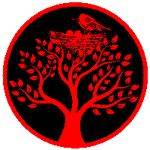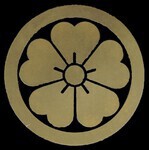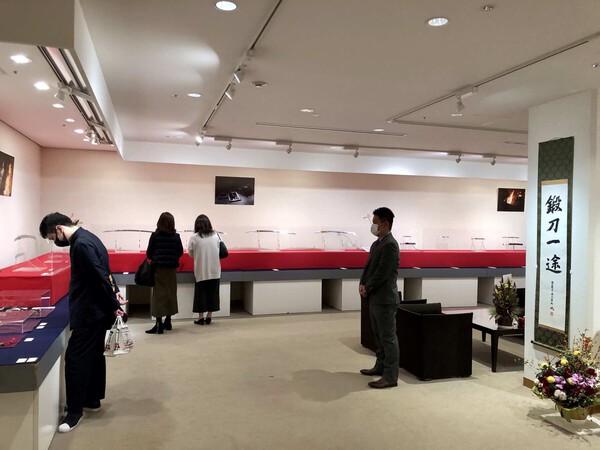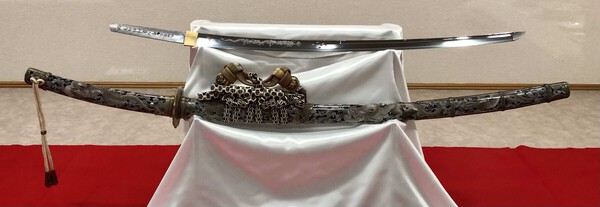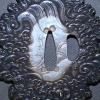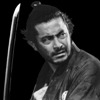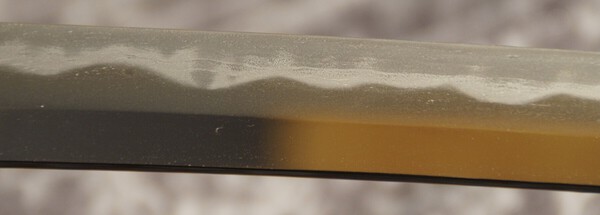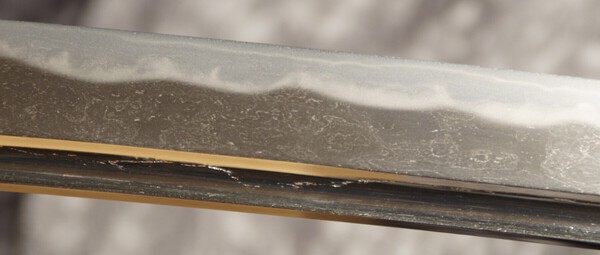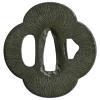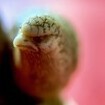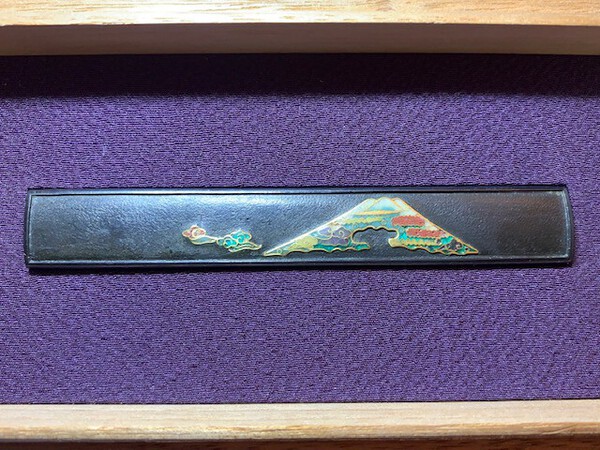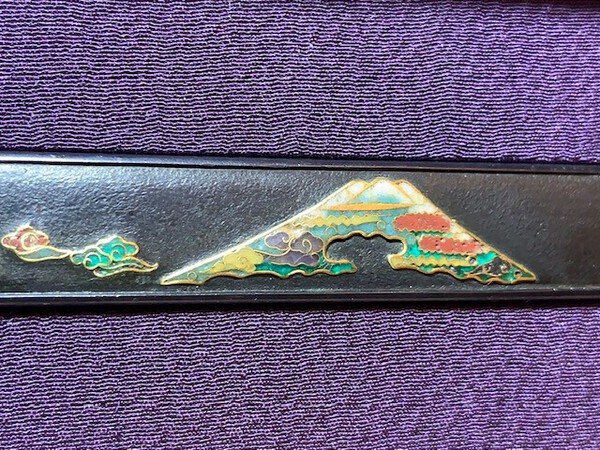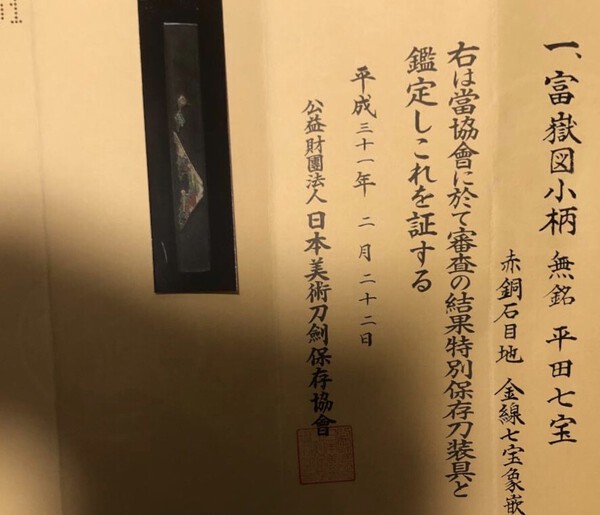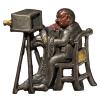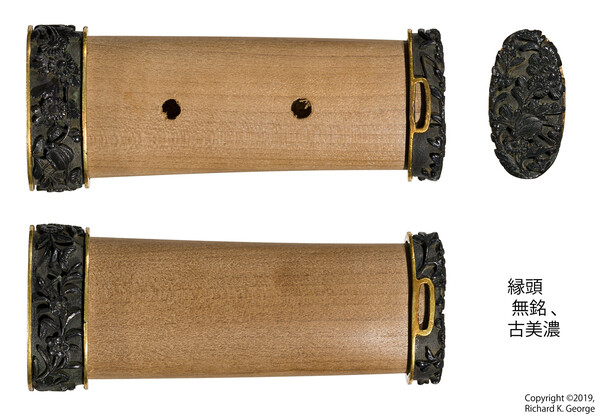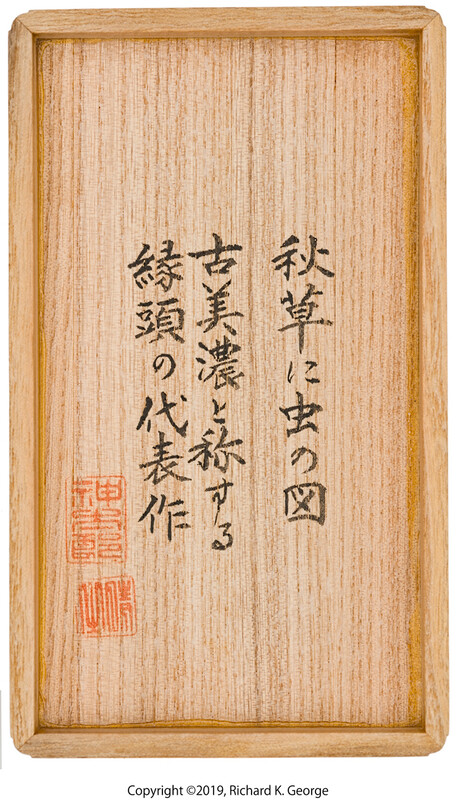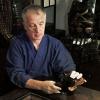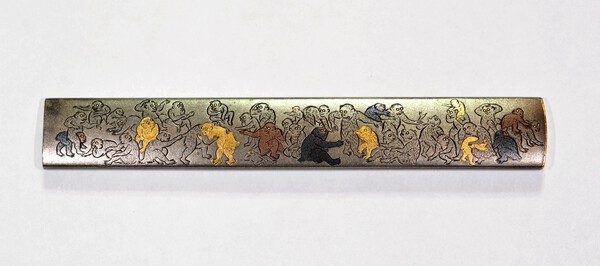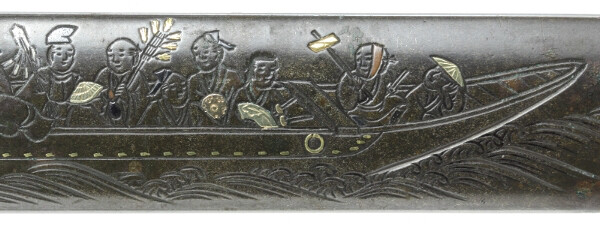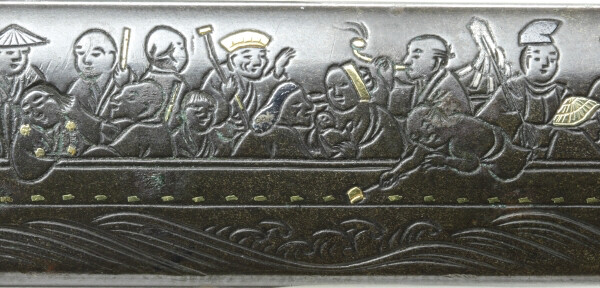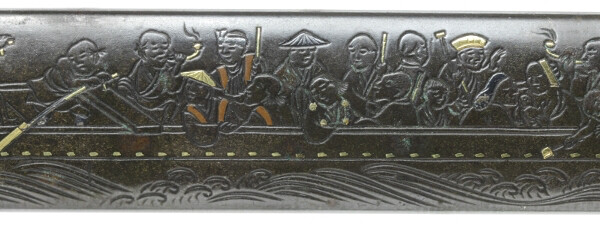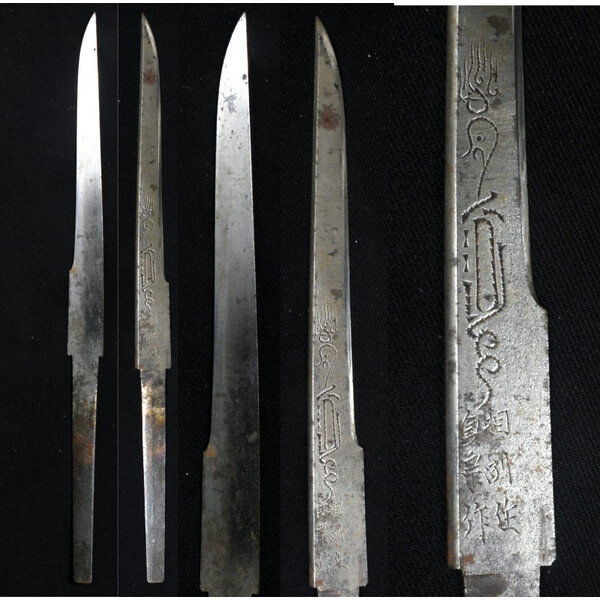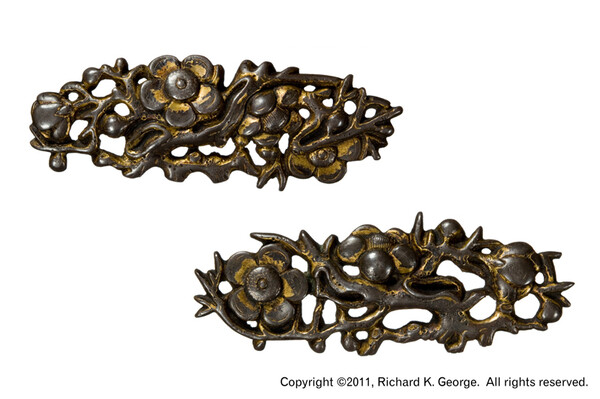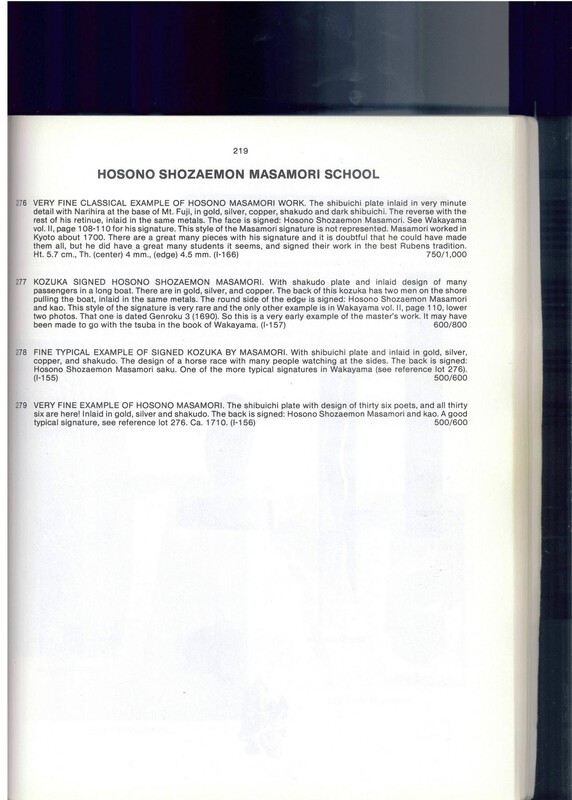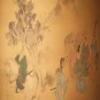Leaderboard
Popular Content
Showing content with the highest reputation on 01/12/2021 in all areas
-
I should be a wiser man... I know that making up a coherent collection needs making choices. But actually I'm not rational in collecting. In that strange year of lock-down, social distancing and hard work I had to wait months to receive in hands, almost at the same time, all my acquisitions. Definitely I'm not a "serious" collector, but after all I'm quite happy about my new pieces. No masterpiece here but some interesting opportunity for study. 1 signed Echizen jū Kinai (越前住 記内), possibly Yondai Ishikawa (circa 1640). 2 otafuku-mokkō-gata tsuba with an unusual tetsu-fukurin, possibly Edo Higo (thanks to Mark from NMB). 3 maple and deer antler tsuba, possibly Shōami. 4 plum blossoms in moonlight, possibly kodai Higo (thanks to Thomas AKA Leporello). 5 signed Jakushi (若芝), quite typical of the school, and the only tsuba I purposely searched for buying. 6 Musashino theme tsuba; the still good zōgan remakably contrast with the weared iron surface, and make me think it could be an old tōshō tsuba (just 3,5 mm thick) repurposed and decorated in late Edo. 7 mitsudomoe, inlaid dew drops (or toad skin?); signature unreadable. 8 bamboo and snow tsuba, possibly Kyō-Shōami.6 points
-
I sent Artemis a message about selling "authenticated" Chinese fakes. To their credit they have replied and the item has been removed from the auction. "If you see something - say something" If only eBay and others were as responsible! Artemis Gallery Ancient Art Sydelle Rubin-Dienstfrey Ph.D. Art History Mgr. Research & Writing Mgr. Fine Art Hello Dale, Thank you for this input. We will investigate this ASAP. With much appreciation, Sydelle4 points
-
3 points
-
Today I went to a sales exhibition at the Nihombashi Takashimaya department store of works by Gassan Sadatoshi, and his son Sadanobu, by invitation of Inami Kenichi. I’m not a collector of contemporary swords, but wanted to have a look at their take at Sō-den, my main field of interest. Although the Gassan smiths are famous for their swords with ayasugi-hada, they also excel at the Sōshū style, and some very fine examples were on display / for sale. As a collector of antique swords, I sometimes feel a twinge of jealousy when looking at those absolutely flawless, healthy blades, exactly like the smith intended them. OTOH, they are also kind of “sterile” (for lack of a better expression, and not meant derogatory at all); in any case, art is art, no matter if it was made in the Heian period, or last week. It’s always a pleasure to meet Gassan-sensei, who is very friendly and humble (and constantly in need of a good haircut 😝). The only downside was the lighting, which was a little bright, so I had to twist my neck constantly to get a look at the details in the blades; that’s also the reason why I didn’t take more photos.2 points
-
Yes, usually the cutter's name is part of the saidan-mei, but not on this one, unless I've misread a name as something else. There are two bits that I didn't quite understand (為出生、以首) but they don't look like names. Still, it looks like a legitimate dedication to me. 1867 would have been at the very tail end of the cutting tests. Could be the tester didn't want any attention drawn to himself. Or, it could be the people presenting it to Mr. Minamiyama didn't want to upstage him, and wanted only his name on it. But those are just wild guesses.2 points
-
Dear Nicholas. You are a brave man to conclude that it is from the 1600s based on our guesses which run from Muromachi to Shinshinto! We do not even know if this is a wakizashi or a katana as you have not given us the nagasa. For what it's worth here ares some thoughts. The kissaki is quite large and would have been a fraction longer before the slight damage to the very end. The nakago is signed and has typical takanoha yasurime so no reason to suppose that it is not Minoden. Mino smiths worked all over Japan after unification and worked in many different styles of hamon. The person who moved the machi did not do a very good job, look at the lines of the nakago mune and ha, they are awkward. You have the sword in hand so can confirm what happens to the boshi, what can you tell us about it? Enjoy. All the best.2 points
-
I would think Kanbun Shinto later 1600s, that hamon is rocking. A good polish would really make it zing.2 points
-
2 points
-
Hi, My name is Grey Doffin, I live in northern Minnesota, USA, and I have a website dedicated to Nihonto and books on the subject: https://www.japaneseswordbooksandtsuba.com/ I've been studying Japanese swords for nearly 40 years now and buying/selling for most all of them (I'm trying to lose my 1st million). If you check my site today, in late 2020, you'll find a dozen or so swords and koshirae (with more to come soon), 150 to 200 sword fittings (tsuba, menuki, fuchi/kashira, etc), and a very large inventory of books on the subject. I try to have reasonable prices and items to fit a variety of budgets. I try also to be helpful. If you're just getting started with Nihonto feel free to ask questions about any of my pieces; I'll tell you what I think I know. This field can be daunting; there is so much to understand and ample opportunity to make mistakes. If you come to me with a question, I will answer honestly. Promise. Not sure what all I'll do with this space on NMB. As I get some time in the coming days I'll post highlights of some of the pieces on my site; beyond that we'll just have to wait and see. Feel free to post here also; your comments are welcome. If you want to contact me please use my email, not personal message on NMB. Email is easier and I can keep track of our correspondence in folders on my computer. Phone calls, if you live in The States, are fine also. Thanks for stopping, Grey grey@japaneseswordbooksandtsuba.com 218-726-0395 central time1 point
-
Hello All, I have 2 tsubas for sale, please PM on the site (Please note tsuba boxes are not included) I have perfect feedback on Ebay 152 transactions and have sold both a Wak and Katana and fittings on this board if you would like references Shoami NBTHK Unsigned $1000 OBO https://www.dropbox.com/sh/hb5gjdwuwy9baon/AACDOzhPGVEAZsF1YtgGh77qa?dl=0 Matsuyama-jū Shōami Nobutada SOLD https://www.dropbox.com/sh/esanplvn4nk3yb4/AAAVbAgMaoNOSzdlyJfnLrI-a?dl=0 Thanks Steven in Maryland1 point
-
Not sure if this has already been posted, but just in case, I came across this interesting article: http://www.asahi.com/ajw/articles/130683091 point
-
Jussi, You deserve "The Nihonto Gold Medal Award" for achievement and excellence for a job well done. It exceeded beyond my wildest expectations. extraordinary work! Best regards, Tom1 point
-
If they were made in Japan they must have a registration card. There are so many regulations for swords (weapons) made in Japan. Its a mystery indeed. I cant belive that a licensed forgery in Japan made this huge amount of blades incognito.1 point
-
If the implication is that it is similar to the present sword then I don't think its correct. These have well defined togari, well defined groupings of such, each separated and rising above the "valleys", groupings are mostly resembling each other. They are also not slanted left and right, or become thin long lines, crab claws or tobiyaki. They also will look quite differently in hand in terms of nie... If one is to go this way, one can pull Kanetomo, who indeed forged in heavily Bizen skewed fashion and indeed could resemble this blade in oshigata.1 point
-
Hello, I am new to the forum. My passion is antique military guns and sporting guns. Blades of all type interest me. I am dealing with a collection of antique fire arms and a matchlock appeared. I have dealt with several WWII era Samurai swords but this is my first match lock. I know very little about them. I am interested in finding any and all information. I am certain the screws are not correct. I would like any pictures containing the rivets that would be original to the gun. I am working with a master gunsmith who can make most anything. The ramrod has been shortened a rethreaded. I would like to know if the what is left the ramrod is it correct? With the addition of a piece, would the ramrod be correct. As I have studied, most examples of matchlocks I see have an external main spring. When the hammer is cocked the trigger releases the hammer and it gently drops to slightly above the pan. Is this correct? There are no wear marks indicating a main springs was ever present. I have seen a few example like this one. I would like to date the gun and know the maker. Again any information will be appreciated. Tom https://imgur.com/gallery/N3hExgX1 point
-
1 point
-
1 point
-
Might be one of those katate uchi that had a machi okuri in order to take a longer tsuka.1 point
-
I would feel late Muromachi Bizen is a quite reasonable guess.1 point
-
1 point
-
Not sure what your problem is. I've bought several blades from Mike, & all but one papered. Can't get much more "collectible" than that!1 point
-
1 point
-
https://www.touken-world.jp/search-habaki/art0003680-2/ What I saw was a single piece Habaki, Guido, not a Daitsuki. Here they seem to describe it 'Osaka Ju Gassan Sadakatsu...................' which might account for any interchangeability, but I need to follow this up further. Apologies for thread drift.1 point
-
1 point
-
The photos expand if you click on them. Anyhow, I think I know what you mean, but have seen those type of habaki only on tantō so far, and more often on Umetada blades, not on Gassan blades; they are called daitsuki-habaki 台付鎺 .1 point
-
1 point
-
1 point
-
1 point
-
The Wakayama entry form Shunmin (春民) says: Surname of Funakoshi, who later adopted the name Shunmin (春珉). Extant works with the mei of Shunmin (春民). Born in May of Meiji 1 (1868). Died in Showa 15 (1940) at the age of 73. He had two apprentices; Shunkai (春海) and Shunshu (春秀). So according to Wakayama he is a post-Edo artist, who only used the name Shunmin, albeit with two slightly different variations on the second kanji (民, 珉), both of which are pronounced "min". Beautiful tsuba. Makes me want to see more works from him.1 point
-
I really like that motif, now that I am looking at it. Am I to assume that some represent the ten ox herding pictures (poems) of zen enlightenment? Is there another meaning for the ox? Really nice works.1 point
-
Yes, I actually paused with this one as well, trying to decide which side of the yokote the togari is on. It seems to be right on the yokote, which could still be shinto; otherwise I am surprised that with very active hamon one would go for something that close to suguha, though some people in shinshinto did that.1 point
-
However, Kirill, I don’t think the boshi is Sugu. There is I think a togari past the yokote in one picture. That’s why I didn’t mention Shinto. Might be Shinshinto, yes, but I’m still not convinced.1 point
-
Sugu boshi, so I would argue its shinto. The style itself is not of Kanemoto lineage, there is too much variation between the groups, the center togari is not really larger in size, there are crab claws, nie does not stand out, overall it looks far more Bizen than Kanemoto.1 point
-
Here we have a kimono merchant and assistant helping a lady with her purchase. Meiji period, and they wear wakizashi as they serve on their shop, why, because they are handling money and goods of serious value. Probably fairly nice pieces as well given the value of what they sell. (As second hand kimono dealers, they might have picked up a bargain). The other reason for a Chonin to have a sword is when travelling on the road, there are bandits out there. In this case probably a cheaper piece.... and it might even be rented....1 point
-
1 point
-
1 point
-
1 point
-
It is signed Noshu Ju Kanemoto (濃州住兼元). Based on the sugata, to me, it seems fairly modern - 1600s, Edo or newer. IMO1 point
-
1 point
-
於武州大和大掾国武 Oite Bushū Yamato Daijō Kunitake 南山祝長寿 Minamiyama Iwai Chōjū 百戦不殆 Hyakusen Ayaukarazu 慶應三卯歳五月二日為出生 Keiō san usagi toshi gogatsu futsuka - tame shussei 生以首百歳二ツ胴落 (unclear) futatsu-dō otosu Seems to be a gift on the occasion of someone's 100th birthday. The date is Keiō 3 (1867). The recipient is Minamiyama. Chōjū means long life, and the phrase "Hyakusen Ayaukarazu" means One-hundred battles, no dangers. Its a phrase from Sun Tzu. The futatsu-dō is clear enough, but I can't get the bit in between. It seems to be another allusion to 100 years, but I can't make out the first bit.1 point
-
I agree with Michael 100%. Shinsakuto can be used in sword appreciation and martial art training or combat (but yea, gun is more effective to kill your enemy in combat and hopefully we never have to confront any life and death combat during our life) while antique swords (mainly swords made before the Showa era or swords made by swordsmiths who have deceased) should only be preserved for sword appreciation and be regarded as important artworks and historical artifacts. It is actually good for modern swordsmiths to continue to make Nihontos for martial art practice. The customers who seriously practice martial art can give the swordsmiths valuable feedback to ensure newly made Nihontos are still practical for combat. If modern swordsmiths stop making Nihonto for martial art training/combat, they would focus too much on making "fancy" art swords and forget the practical elements of the sword (for example, general shape of the sword, balance of the sword, weight, curvature, and the balance between sharpness and durability). If the swordsmiths of the current generation and the following generation stop to make practical Nihonto, the true art of Nihonto craftsmanship would be lost and the future Shinsakuto could only be considered as "sword-like artwork". But on the other hand, JP's concern is understandable. It is always sad when swords are damaged during martial art practice. For example, a sword could be bent during a failed tameshigiri practice. This kind of incidents should always be avoided. And that is why, in martial art training, Shinsakuto should only be used by serious and experienced martial art practitioners who have the right and mature knowledge about how to take care of their swords. And of course, martial art practitioners should always be careful not to hurt themselves. All of these being said, please enjoy watching this video about Yoshindo Yoshihara made a sword for a martial art master to test the sword's strength when dealing with a Japanese helmet:1 point
-
1 point
-
1 point
-
It's not worth €130 a year for four magazines with a partial translation that follows a year later. I also dislike that the forum is closed to members only, this is elitism as it excludes people on low incomes. JoA, AUG69 and Uwe are all board members, so it's always a one-way street when they rejoice the accomplishments. I not going to continue my subscription to this rich boy yacht club. I'll also add that if your face doesn't fit this society will do their best to destroy you. Maybe the Chairman would like to relate how their newest board member Almeric caused a commotion at the Shinsa in Japan shouting at a dealer that he cannot be associated with me. You actually are telling people who they can be friends with now at official events.1 point
-
I remember that well. In fact more than a nudge, you negotiated a price that was hard to refuse. And a guarantee that it would paper as well!!! Many thanks for that. Attached is the scan from the KTK 6 th catalogue for Gordon. I fear this post might be clogging up the thread. It might be a good idea to attached the scan with the kozuka pictures above and delete this post to keep things tidy.1 point
-
1 point
-
1 point
-
1 point
-
1 point
-
1 point

